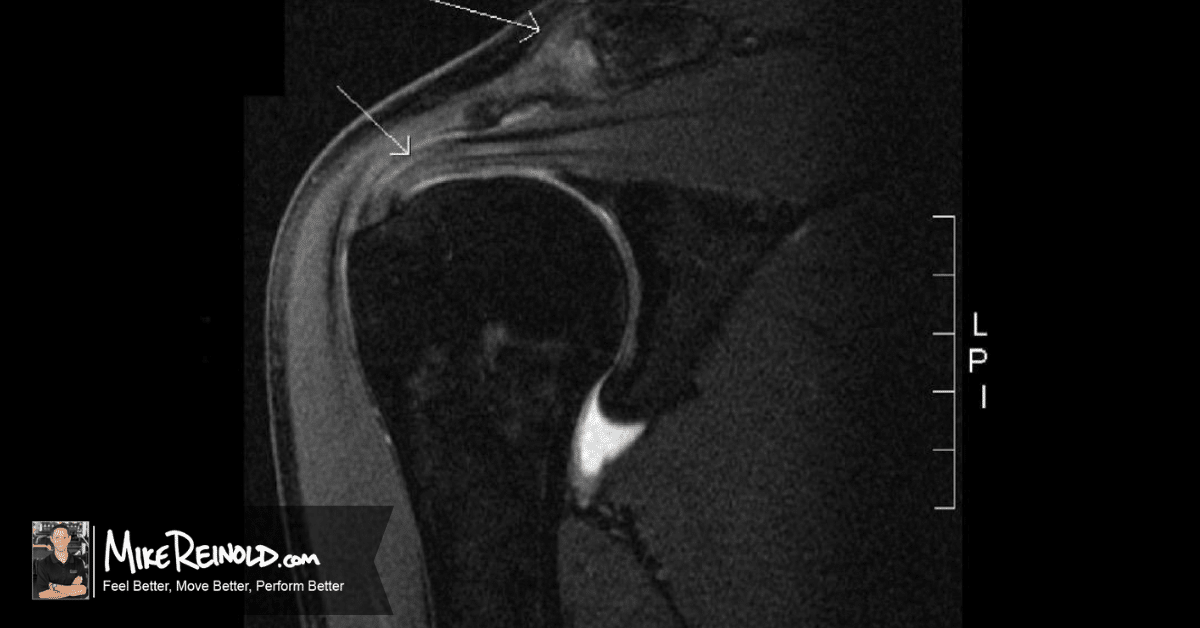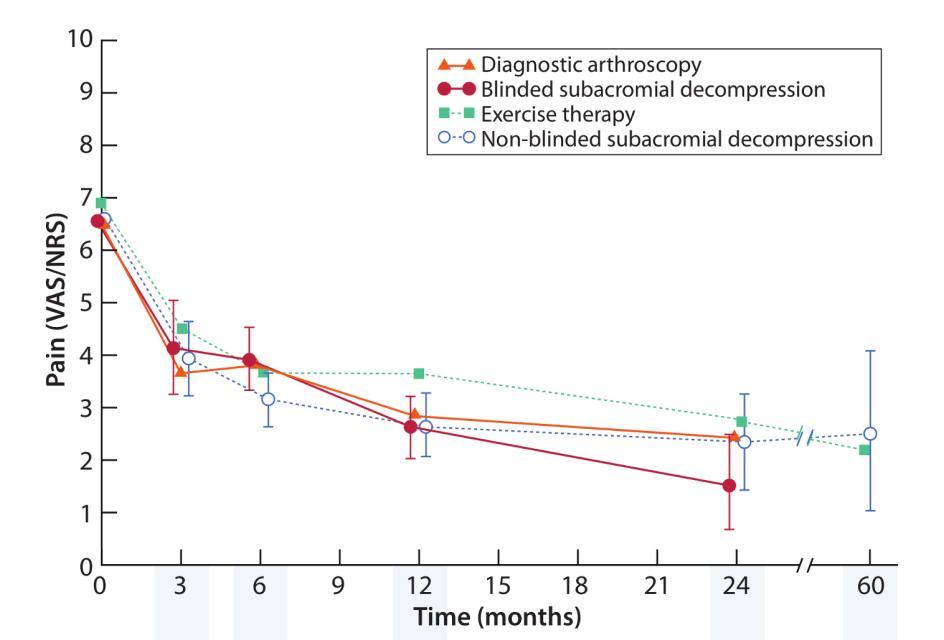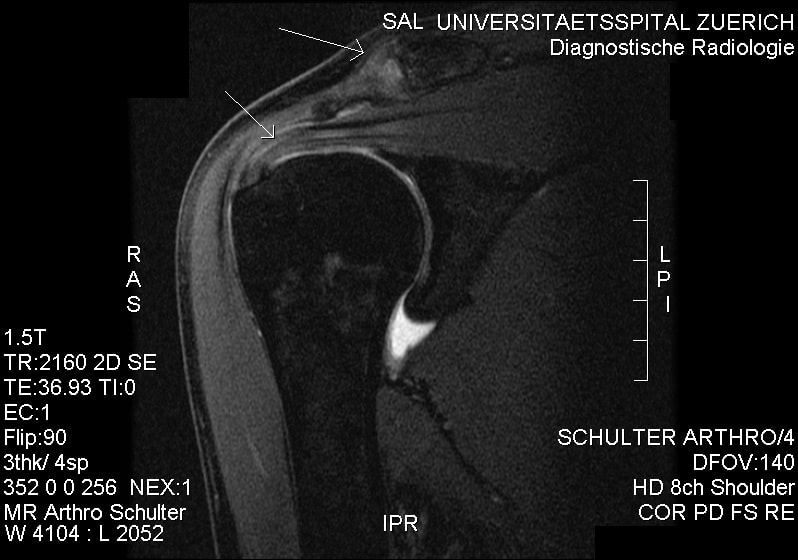Subacromial decompression surgery is a very common procedure performed for people with shoulder pain. The procedure is often recommended for people with “shoulder impingement” and was originally theorized to open up the subacromial space and help reduce biomechanical impingement.
But recent research has challenged the effectiveness of the procedure, and even the diagnosis of “subacromial impingement” itself.
Subacromial Decompression Surgery for Adults with Shoulder Pain: A Systematic Review with Meta-Analysis
A recent article in the British Journal of Sports Medicine reviewed the results of 9 clinical trials in over 1000 patients with shoulder pain. The authors includes studies that compared subacromial decompression surgery with placebo surgery and exercise therapy.
The study noted that subacromial decompression surgery provided no important benefit compared with placebo surgery or exercise therapy.
In particular, they found that surgery did not provide any additional benefit for pain, function, and quality of life at the 6- and 12-month mark after surgery.
As you can see, there does not appear to be a significant benefit in undergoing subacromial decompression surgery for shoulder pain or function.
What’s All This Mean?
Based on the results of several studies recently, it sure looks like we’re going to be seeing less subacromial decompression surgeries in the future.
It seems like the benefit of undergoing surgery may be related to the postoperative rehabilitation and application of graded exercise postoperatively.
This is another one of those surgical procedures that seems like it was missing the boat anyway.
Thinking purely biomechanically, rather than addressing the underlying concern that may be causing “impingement,” such as stiffness or loss of dynamic stability, we simply just make more space?
Seems overly simplistic, right?
We probably haven’t address the underlying cause.
But based on all this, perhaps we shouldn’t even be using the term “impingement” anyway.
From a non-biomechanical perspective, I’m not even sure we truly understand the etiology of shoulder pain at times and always seem to rush towards a biomechanical “impingement” approach. There could be numerous reasons why graded exercise can help reduce shoulder pain other than purely biomechanical factors.
But let’s not forget one main point here from this study. At 5 years down the road, these patients still had shoulder pain between a 1.5 and 3 out of 10 on a visual analog scale.
So advising people to ignore the biomechanics and simply work through some pain may not be an ideal approach as well.
I’d hate to see us go down that road.
These patients had shoulder pain for greater than 3 months to be included in this study. It’s difficult to quantify the degree of rotator cuff pathology present in these people, how this impacted their shoulder function, and what their long term prognosis will be going forward. There is still underlying inflammation of the rotator cuff.
So What Should We Do?
As research like this continues to be published, we’re probably going to be seeing less of these procedures.
Maximizing the function of the shoulder is going to become even more important, regardless of whether or not something is causing “impingement.”
I’ve had a lot of success with people by keeping it simple. Rather than worry about the exact specifics of the pain, just simply focus on normalizing motion, increasing strength of the rotator cuff and scapular muscles, enhancing dynamic stability, and then gradually building tissue capacity through loading.
This is a great example of when focusing on the functional deficits is more impactful than the structural diagnosis.
Optimize the person, don’t just treat the pain.








